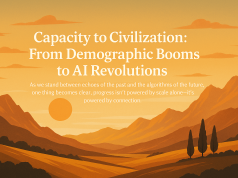The gig economy—a term that was barely a whisper at the turn of the century—has since evolved into a roar that echoes across the contemporary landscape of work. As an experienced labor union representative, it is my duty to peel back the layers of this complex phenomenon and scrutinize its effect on the modern workforce. The gig economy is often described using an enticing vocabulary: flexibility, entrepreneurship, freedom. But beneath this allure lies a more sobering reality—one of precarious labor protections, a dearth of benefits, and the Herculean task of unionization for workers who are often isolated by virtue of their employment. Is the gig economy then a boon or a bane? That’s the critical question we must address.
The Pros: A New Frontier of Flexibility and Choice
One cannot discuss the gig economy without acknowledging the attractive flexibility it offers. For many, it signifies a departure from the 9-to-5 grind, an opportunity to balance work with personal life or to pursue multiple interests. This can be particularly liberating for those whose circumstances make traditional employment impractical. Furthermore, the gig economy can serve as an incubator for entrepreneurship, allowing individuals to test the waters of self-employment with less risk than starting a business from scratch. For those with a pioneering spirit, therefore, the gig economy represents a vast landscape of untapped opportunity.
The Cons: The Precariousness of Gig Work
However, this newfound flexibility comes at a cost. Traditional employment relationships usually include labor protections such as minimum wage laws, overtime compensation, and workplace health and safety regulations. In stark contrast, gig workers are often classified as independent contractors, positioned outside these protective frameworks. They face unpredictable income streams, lack access to employer-sponsored benefits like healthcare and retirement plans, and encounter difficulties in securing loans due to the instability of their employment.
The Unionization Challenge
A pivotal role of labor unions is to advocate for workers’ rights, yet the gig economy presents a unique challenge to this mission. Gig workers, dispersed and individually contracted, do not fit easily into the conventional collective bargaining model. The transient nature of gig work further complicates union efforts to organize these workers. Despite these obstacles, it’s incumbent upon unions to evolve and explore new strategies for representing and safeguarding the interests of gig workers.
The Future of Labor Relations
The gig economy is not just a fleeting trend; it’s a signpost to the future of work. As it continues to grow, it will inevitably shape labor relations, compelling unions, employers, and policymakers to reconsider the very definition of employment. Discussions about portable benefits independent of employment status, for example, are already gaining traction as potential solutions to the challenges faced by gig workers.
Labor unions thus stand at an inflection point. Our ability to innovate in our advocacy strategies will determine our relevance in this new era. We must fight for regulation that acknowledges the unique circumstances of gig work while ensuring that the fundamental principles of fair labor are upheld. To safeguard the rights of all workers, we must adapt and persevere in the face of change.
In Conclusion
The gig economy encapsulates the quintessential struggle between innovation and tradition. It offers seductive benefits but also exposes workers to significant risks. As labor union representatives, our task is to demystify this duality for the workforce and champion a future where flexibility does not come at the expense of fairness. We must provide a voice to the voiceless and ensure that the modern landscape of work does not erode hard-fought worker rights but rather continues to uphold and expand them. Only then can we determine whether the gig economy is truly a boon or merely a disguised bane for the modern workforce.


























